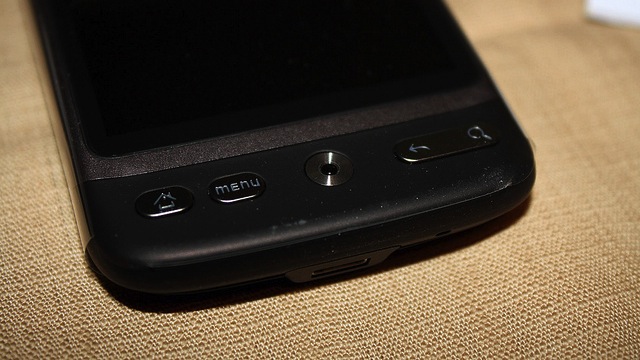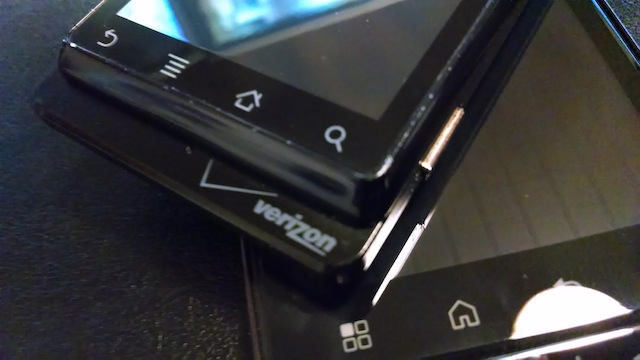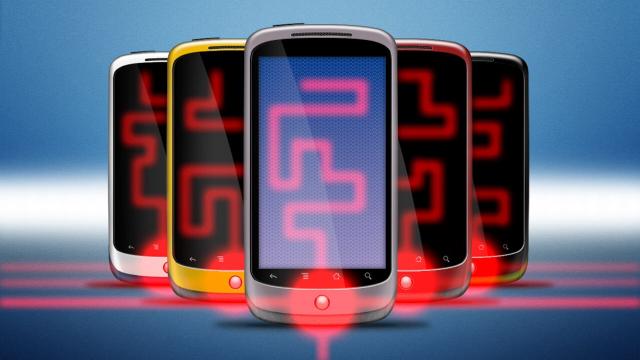The hardware buttons on your Android phone are already programmed to be useful, but if you’re repurposing an old phone as something new, want to switch the buttons around to something you’re used to, or just enjoy bending Android to your will, it’s not hard to change them. Let’s take a look at how to remap the buttons on your Android device, and why you might want to.
There are a lot of reasons you might want to remap the buttons on your Android phone or tablet. If you’re using it as a remote control, it’s easier to just assign the hardware buttons to playback controls so you don’t have to wake, unlock and open your remote control app every time you want to skip commercials or play the next episode in your playlist. If you’re using your smartphone as a camera, setting a hardware button to the shutter is easier than tapping the screen — and it opens the door to using external triggers to take pictures.
It’s also possible — especially in the case of Samsung devices — that your buttons have been mapped to Samsung’s own apps and shortcuts, pushing Google’s own versions into the background (for example, double-tapping Home on the Note 3 and many other Samsung devices opens S-Voice, as opposed to Android’s own voice search.) Alternatively, maybe you have an older Android phone with a search button on it, and you want that button to do something other than search — maybe take a picture, or fire up your music player, or open Navigation. It’s all easy to do. Here’s how.
Use ButtonRemapper to Reassign the Hardware Buttons to New Commands

ButtonRemapper has been around for a long time. While it’s a stretch to say it’s still under development, it definitely still works on many devices. You’ll need to be rooted, and you can grab it over at the XDA Developer Forums for free. Once installed, you can set any of your phone’s physical buttons to commands like power, camera, volume up or down, play/pause (and other specific media playback commands), and any of the basic commands such as menu, back, home or search. If your device has one of those buttons set to something else, you can switch it back to the Android default, or you can set the buttons to do anything else you wish.
One of the nice things about ButtonRemapper is that you can control whether the button passes its command to the system when the phone is asleep or not. Set as button’s commands to “WAKE”, and the command will both wake the phone and pass the command through. Set it to “WAKE_DROPPED”, and the phone will wake up when you tap the button, but the command will get dropped. Still, if you have your phone set up as a remote control, configuring the physical buttons at the bottom to play/pause, forward and back, then setting the volume sliders to the volume on your TV, and finally setting them all to WAKE will make sure that you can still control what’s happening on the big screen even if your remote is asleep.
Like we said though, ButtomRemapper has been around for a long time. Your odds of it working smoothly go up if your phone is a little on the old side, and don’t expect it to work particularly well with newer devices that use software buttons for back, home and app switching at the bottom of the screen. Some devices require special versions too, like this one for the Galaxy Tab. Check the thread for details, and see if your phone is supported. If you want to edit keymap files on your own, there’s even a utility in the first post to help you with that too.
Double-Tap the Home Button to Launch Specific Apps

If you don’t want to tweak the individual buttons at the bottom of your phone, or you’d rather use them as shortcuts instead of re-program them, try Home2 Shortcut, a free app at Google Play. Over at ComputerWorld, JR Raphael uses it to change the way Samsung devices default to S-Voice instead of Google’s own Android voice search when you double-tap the home button. If you want to do the same for your Samsung device, or you just want a system-wide shortcut for Voice Search or Google Now, Home2 Shortcut can do it.
Once installed, you can set shortcuts for any of your system’s hardware buttons, not just the Home button. Home2 Shortcut can set an app to launch when you double-tap home, but it can also set an app to launch when you tap home and then search, or home and menu, home and search, and more. You can even tell it to launch a specific app when you long-press Search or Camera (if your phone has either button).
Add Customisable Buttons to Your Screen Instead
If you don’t like the idea of fiddling with all of this, or you have remapped your buttons but still want access to the standard commands, try Button Saviour . You might remember it from when we rooted a Nook Simple Touch — it’s the app that, once installed, lets you customise which hardware buttons on the device do what, and adds a translucent overlay on top of the screen with home, back, menu, and a few other buttons that you can always access, no matter what app you’re in.
Button Saviour works the same way on your phone — the buttons may be a little tough to see, but if you’ve remapped your hardware buttons, you can use it to get an overlay with those old commands so you don’t have to use crazy workarounds to get back to the home screen or open the app drawer. Best of all, the overlay is completely customisable, so you can add as many buttons as you choose. The only downsides to Button Saviour is that it requires root (although there is a non-root version), and it only works up to Android 4.0 (Ice Cream Sandwich). This makes it ideal for those old phones you may be repurposing into remote controls, transforming into home automation projects, or using as cameras. $2 gets you the pro version, with a few extra features.
If you need another alternative, try Virtual Button Bar. It’ll set you back $2, but it supports Android 2.2+ (including ICS and Jelly Bean) and offers similar features. It still requires root and has some quirks on Samsung devices, but it’s a solid option too.
Of course, if you’re perfectly happy with the button mapping on your device, you don’t have to change a thing, but if you just got a new phone and want to turn the old one into something interesting, you have plenty of options.
Photos by zandog, warrenski.

Comments
One response to “How To Remap The Hardware Buttons On Your Android Phone”
Also, depending on the device, some custom ROMs (I’m running LegacyXperia CM10.1 for instance) have hardware button remapping baked in.